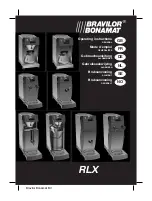
-
15 -
When connecting to a server that does not support Heartbeat, select Client (no heartbeat).
-
UID: UID (Unit Identifier) is MODBUS slave address (0x0~0xff), It’s be defined in MODBUS TCP frame format,
In Properties, We provide consumer define UID. (Suggest use default setting)
-
Delimiter HEX1 and delimiter HEX2: These two fields allow the user to enter two ASCII characters (in hex
format) that delimit the beginning and end of a message. When a message with both these delimiters is
received at the serial port, the data contained in the serial buffer is placed in an Ethernet packet and
sent out the Ethernet port. If only Delimiter 1 is set (Delimiter 2 is zero or blank), upon receiving Delimiter 1
the SCB-A08 will put all the data in the serial buffer in an Ethernet packet and send it out the Ethernet
port. If serial data greater than 1 kilobyte is received it will automatically be placed in an Ethernet packet
and sent out the Ethernet port. (Suggest use default setting)
-
Force Transmit: This field allows the user to set a maximum time limit between transmissions of data. The
value set in this field multiplied by 100 ms determines the Force Transmit time. When the elapsed time
reaches the time configured in this field, the TCP/IP protocol will pack the data currently in the serial
buffer into a packet and send it out the Ethernet port. (Suggest use default setting)
- Port status: This field indicates whether a serial port is connected to a server or by a client.
- TCP/UDP port: The TCP/UDP Port defines a communication port number. In all modes of operating, Virtual
COM, Direct IP, and Paired modes, both the TCP/UDP Client and server port settings must match. For I/O
box configuration port is 4001.
-
Serial port mode: This allows configuration of the serial server for the following modes of operation:
Console – When this mode is selected and the server is updated, a PC running a communication
program such as Hyperterminal can communicate with the serial server via the Console Mode serial
port (Port 1 on SCB-A08), displaying the Server Properties screen and allowing configuration of the
server and its ports. (under 4000 port)
Upgrade – When this mode is selected and the server is updated, firmware can be uploaded into the
serial server via the Console Mode serial port or a virtual COM port mapped to the number of the
Console Mode serial port. (under 4000 port)
Default – When this mode is selected and the server is updated, it will revert the server to its default
configuration. (under 4000 port)
RS-232 – When this mode is selected and the server is updated, the selected serial port will become a
RS-232 serial port on the server.
RS-422 – When this mode is selected and the server is updated, the selected serial port will become a
RS-422 serial port on the server.
RS-485 – When this mode is selected and the server is updated, the selected serial port will become a
RS-485 serial port on the server.
-
Connection at: When the Connection Mode field is set to Client or Client (no heartbeat), this field
becomes active, allowing the SCB-A08 (acting as a client) to connect to the server either on Power up or
on Data Arrival (first character arriving).
-
Maximum connection: When the Connection Mode field is set to Client or Client (no heartbeat), this field
becomes active, allowing the SCB-A08 (acting as a client) to connect to the server either on Power up or
on Data Arrival (first character arriving). (Suggest use default setting)
-
Remote IP address: This is a security feature that is activated when the IP address of the desired client is
programmed into the remote IP Address setting of the menu. This tells the SCB-A08 to communicate with
only the listed IP address and to filter out all other requests for connection. The SCB-A08 is setup in the
menu as a TCP or UDP server to us this feature. The default setting is 255.255.255.255. It is recommended
not to change this setting until the application has been tested and is communicating properly. At that
point the address filtering feature of the SCB-A08 can be activated. (Suggest use default setting)
Step 2:
Updated server properties separately for each serial port.
User Manual






































